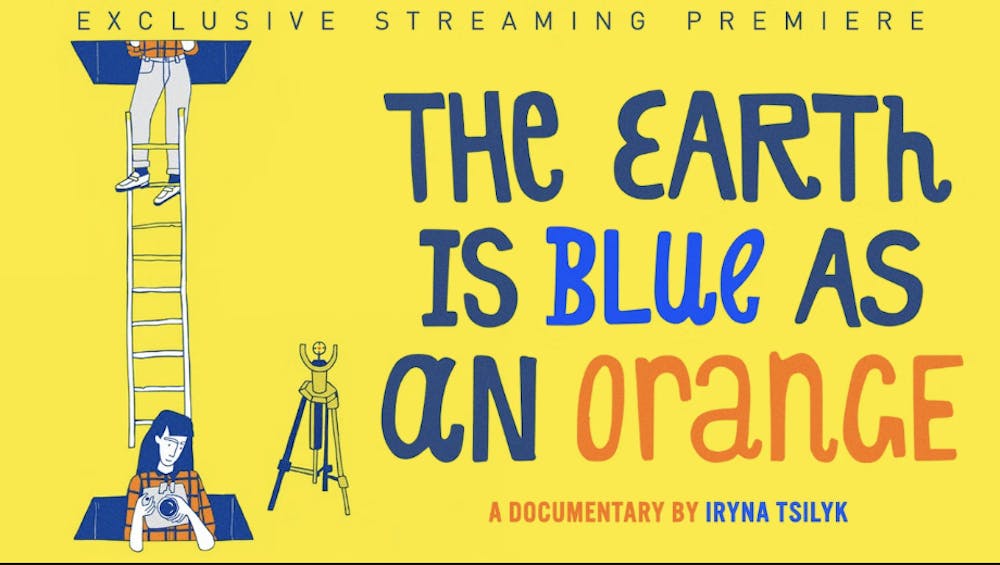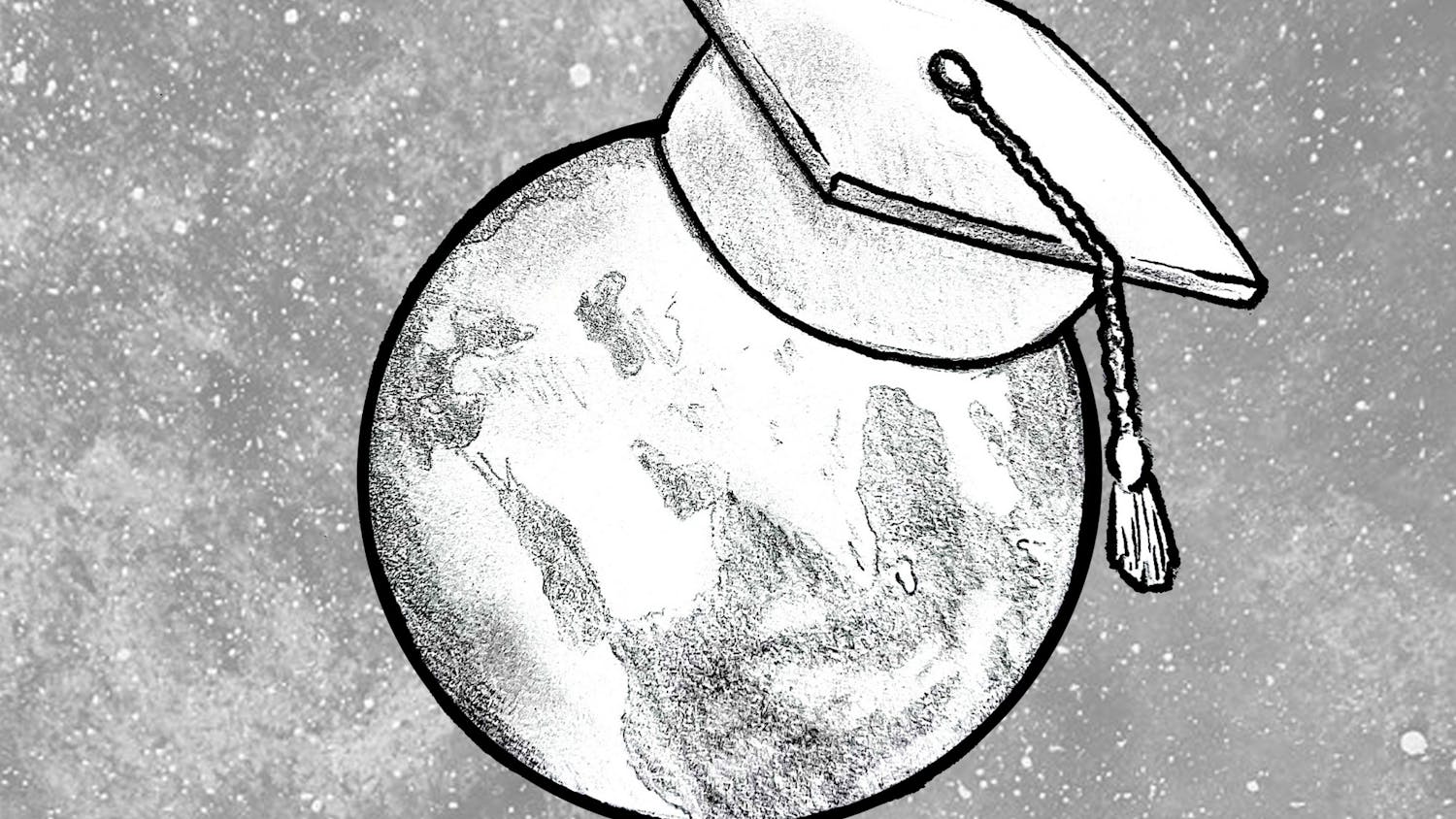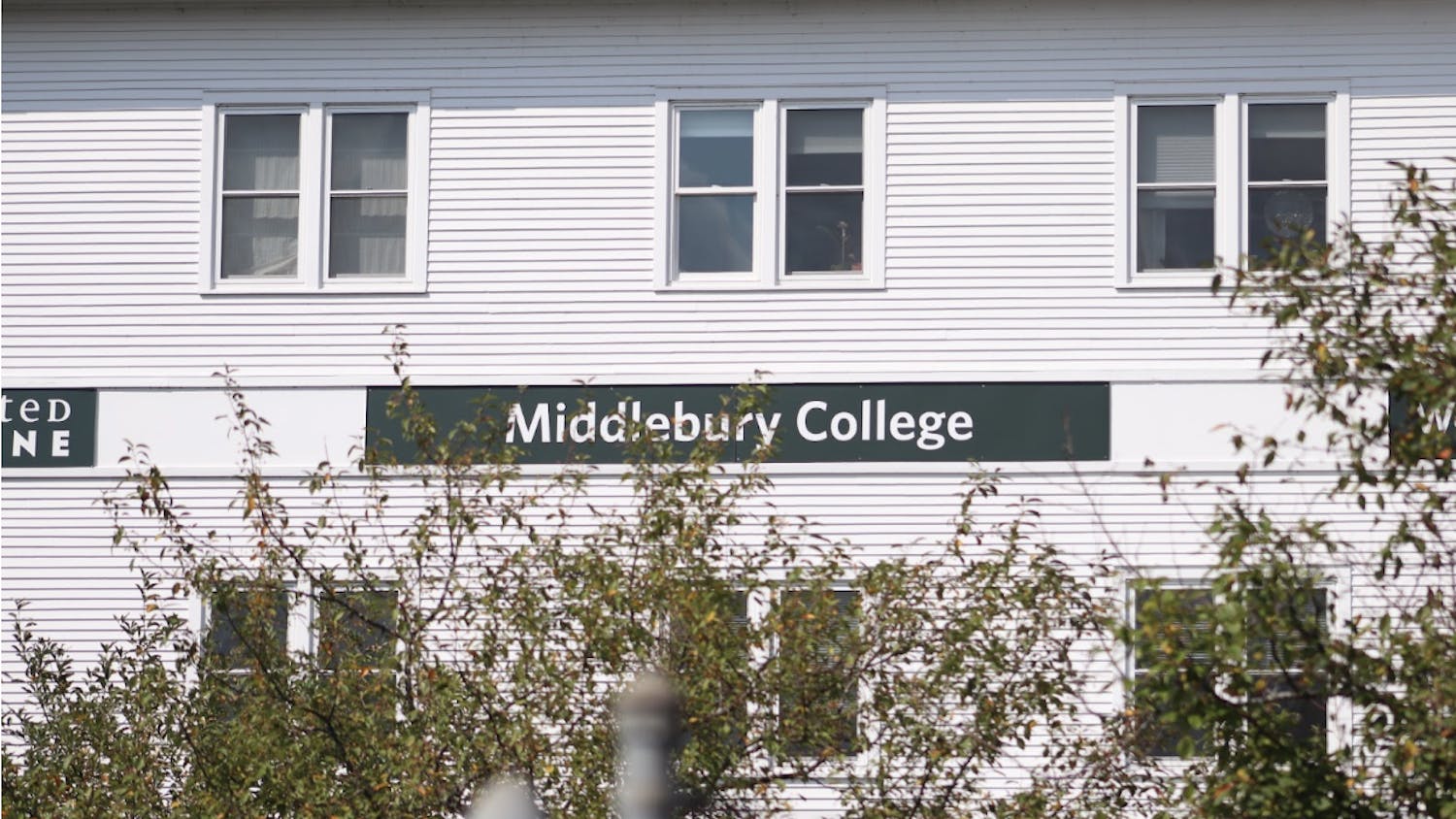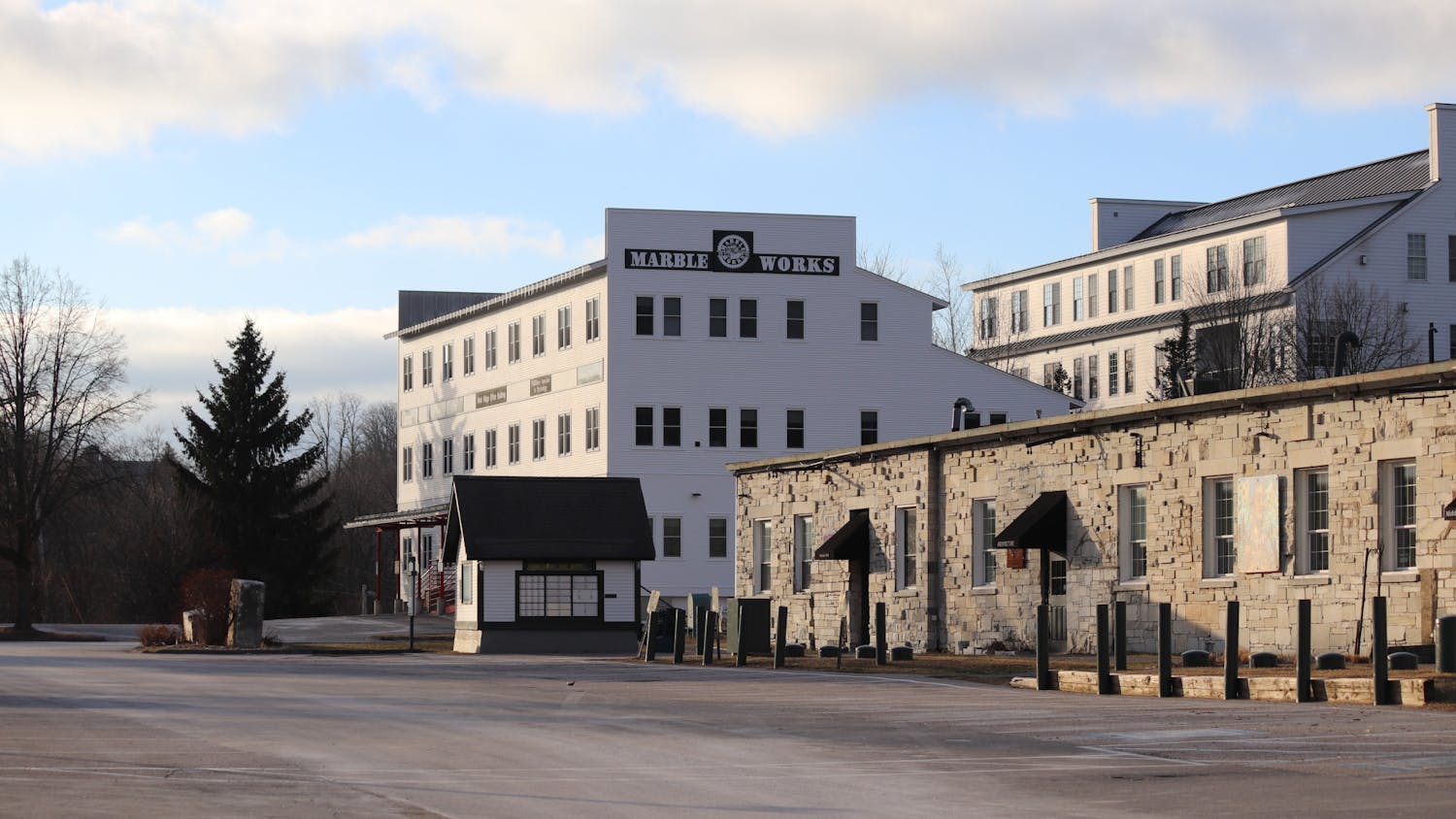The Axinn 232 screening room was nearly full on the frigid night of Feb. 24 as Middlebury students and community members packed inside to watch “The Earth Is Blue as an Orange,” a 2020 Sundance-award-winning documentary about a Ukrainian mother and her children trying to live a normal life amidst the devastation of the Russo-Ukrainian War. Introducing the screening were students Mariia Dzholos ’24 and Kseniia Lebid ’26, both citizens of Ukraine who organized the event by coordinating with director Iryna Tsilyk and a producer to secure the rights to screen their film. The hosts began the night by emphasizing the screening as a commemoration of the one-year anniversary of Russia’s full-scale invasion of Ukraine. Speaking with grace, Dzholos and Lebid implored the audience to recognize the tragedy being endured by their country for what it is — war — and to not accept the diminishing label of “conflict” that has shaped the conceptions of many foreign observers. Such an eloquent appeal for earnest consideration of the plight of the Ukrainian people was followed by the film. A beautiful documentary about carrying on in the face of overwhelming hardship and danger, “The Earth Is Blue as an Orange” gently observes the daily lives of a family of filmmakers in Ukraine’s embattled Donbas region, granting Western audiences a lens of compassion and fellowship through which to see themselves in their Ukrainian neighbors.
The film takes place in 2014 shortly after the Russian invasion of Ukrainian-held Crimea. This act of military aggression officially began the war that severely escalated in early 2022 with Russia's invasion of mainland Ukraine. In the town of Krasnohorivka on the front lines of eastern Ukraine, single mother Anna Trofymchuk-Gladky spends her days protecting her four children from the shelling and gunfire of the skirmishes being fought outside her home. She rushes them into their cellar to shelter them from artillery, huddles them in their hallway to shield them from shrapnel and keeps them away from windows out of the fear they will be shot. For all the daily traumas that Anna and her children suffer, however, it is how the family strives for normalcy and happiness that Tsilyk makes the focus of her documentary. With her older daughters as cinematographers and her young sons as actors, Anna directs a family film crew as a way of giving her children a haven from the stresses of the war. Tsilyk’s film follows the Trofymchuk-Gladky family as they shoot a homemade film about their experience living through the war’s outbreak, a process of coping through creativity that unites Anna and her children against the constant anxiety of wartime.
One of the many things that makes “The Earth Is Blue as an Orange” a great documentary is how it sincerely observes the reality of its subjects without ever feeling like the filmmaker has directed or manipulated them in any way. There was certainly coordination and planning between Tsilyk and the Trofymchuk-Gladkys during the filmmaking process, but the resulting film has such a naturalistic feel to it that it seems like the director managed to capture months in the lives of this family without them ever knowing she was there. Whether Anna is celebrating her birthday or shooting interviews of her children for their film, Tsilyk’s sensitive approach to documenting the family’s affairs creates the impression of being right in the room with them.
The director’s style benefits “The Earth Is Blue as an Orange” most during the scenes centered on Anna’s oldest daughter, Myroslava, who transitions to college over the course of the film. It is in presenting her story, tracking her steps from high school graduation to move-in day to coming home for the holidays, that the film makes its most powerful outreach for compassion from foreign audiences. Viewers who have themselves gone through the intimidating yet exciting process of leaving home and beginning college will recognize a bit of themselves in this young woman, but what they will also see are military vehicles in the background of her graduation photos and destroyed roads strewn with rubble and glass. The sensation of identification mixed with shock produced by these images from Myroslava’s storyline makes it the most compelling element of the film, one that wields the power of shared, universal experience to render it impossible for audiences to emotionally distance themselves from the people of Ukraine.
It was clear that Tsilyk’s humanizing portrait of the Trofymchuk-Gladky family did its job in Axinn 232. When the film ended, the Middlebury audience sat in silent reflection upon the story of resilience and familial love they had just been told, finally sending up applause after Dzholos and Lesbid thanked them for coming and concluded the screening. Now, at the very least, the next time those who watched “The Earth Is Blue as an Orange” read a headline about the war in Ukraine, they will think beyond the facts and figures and remember the family in Krasnohorivka that is making movies and waiting for peace.
Jack Torpey '24 (he/him) is an Arts and Culture Editor. He writes film reviews for the Reel Critic column.
Jack is studying English with a minor in Film and Media Culture. Outside The Campus, he works as a peer writing tutor at the Writing Center and is a member of the Middlebury Consulting Group.




